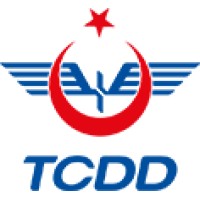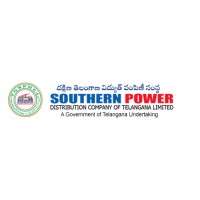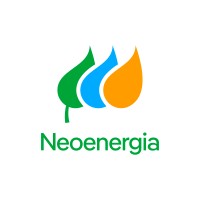
Nova Scotia Power Company Cyber Security Posture
nspower.caWe provide 95 per cent of the generation, transmission and distribution of electricity in Nova Scotia, and serve over 500,000 residential, commercial and industrial customers across the province. Our 1,700 dedicated, safety-focused employees help manage $5 billion worth of generation, transmission and distribution assets and produce more than 10,000 gigawatt hours of electricity each year. We use a fuel mix including hydro, tidal, wind, coal, oil, biomass and natural gas to generate electricity. Our facilities can generate as much as 2,453 megawatts of electricity that is delivered across 32,000 km of transmission and distribution lines throughout Nova Scotia.
NSP Company Details
nova-scotia-power
1283 employees
30531.0
221
Utilities
nspower.ca
Scan still pending
NOV_1835031
In-progress
Between 800 and 900
This score is AI-generated and less favored by cyber insurers, who prefer the TPRM score.
 NSP Global Score
NSP Global Score.png)

Nova Scotia Power Company Scoring based on AI Models
| Model Name | Date | Description | Current Score Difference | Score |
|---|---|---|---|---|
| AVERAGE-Industry | 03-12-2025 | This score represents the average cybersecurity rating of companies already scanned within the same industry. It provides a benchmark to compare an individual company's security posture against its industry peers. | N/A | Between 800 and 900 |
Nova Scotia Power Company Cyber Security News & History
| Entity | Type | Severity | Impact | Seen | Url ID | Details | View |
|---|---|---|---|---|---|---|---|
| Nova Scotia Power | Cyber Attack | 85 | 4 | 5/2025 | NOV322051825 | Link | |
Rankiteo Explanation : Attack with significant impact with customers data leaksDescription: Nova Scotia Power, a major electricity provider in the Canadian province, suffered a cyberattack in March 2025, resulting in the theft of sensitive customer information. The stolen data included names, phone numbers, email addresses, mailing and service addresses, program participation information, dates of birth, customer account history, driver’s license numbers, Social Insurance Numbers, and in some cases, banking information. The attack did not disrupt physical operations, but the company is offering impacted customers a two-year subscription to a credit monitoring service. There is no evidence of data abuse, but customers are advised to be vigilant against unsolicited communications. | |||||||
| Nova Scotia Power | Ransomware | 100 | 8 | 5/2025 | NOV632052625 | Link | |
Rankiteo Explanation : Attack that could bring to a warDescription: Nova Scotia Power, a Canadian utility serving approximately 550,000 customers, suffered a sophisticated ransomware attack that compromised sensitive data of about 280,000 individuals. The attack, detected on April 25, 2025, involved unauthorized access to network systems and business application servers, with the initial breach occurring around March 19, 2025. The attackers exfiltrated personally identifiable information (PII) including names, birthdates, phone numbers, email addresses, service addresses, and account histories, along with highly sensitive financial data such as Social Insurance Numbers, driver’s license numbers, and bank account information. The utility refused to pay the ransom, citing compliance with sanctions laws and law enforcement guidance. | |||||||
Nova Scotia Power Company Subsidiaries

We provide 95 per cent of the generation, transmission and distribution of electricity in Nova Scotia, and serve over 500,000 residential, commercial and industrial customers across the province. Our 1,700 dedicated, safety-focused employees help manage $5 billion worth of generation, transmission and distribution assets and produce more than 10,000 gigawatt hours of electricity each year. We use a fuel mix including hydro, tidal, wind, coal, oil, biomass and natural gas to generate electricity. Our facilities can generate as much as 2,453 megawatts of electricity that is delivered across 32,000 km of transmission and distribution lines throughout Nova Scotia.
Access Data Using Our API

Get company history
.png)
NSP Cyber Security News
N.S. Power CEO, staff grilled over breach that allowed theft of 280,000 customers' data
N.S. Power CEO, staff grilled over breach that allowed theft of 280,000 customers' data. Provincial politicians took aim at Nova Scotia Power ...
Nova Scotia Power can't say why it stores customers' social insurance numbers in database
The president of Nova Scotia Power could not provide an explanation for the company storing customer SIN numbers in its database.
Nova Scotia Power saw the potential for a cyber attack, but did too little too late
Nova Scotia Power saw the potential for the company falling victim to a cyber attack. “Organizations are subject to risk of external threats, ...
Nova Scotia Power says it believes it knows who stole customer data
The head of Nova Scotia Power says the company believes it knows who stole customer information in a recent ransomware attack.
NS Power CEO, staff grilled over breach that allowed theft of 280,000 customers' data
The cybersecurity breach gave thieves access to personal and financial data belonging to 280,000 ratepayers — about half of the utility's ...
Emera, Nova Scotia Power respond to cybersecurity breach; incident response teams mobilized
Emera Inc. and Nova Scotia Power announced they have discovered and are actively responding to a cybersecurity incident involving ...
Nova Scotia Power confirms hackers stole customer data in cyberattack
Nova Scotia Power confirms it suffered a data breach after threat actors stole sensitive customer data in a cybersecurity incident ...
Committee to discuss NS Power breach that allowed theft of 280,000 customers' data
Company CEO Peter Gregg has previously said the data of about 280,000 Nova Scotia Power customers was breached in a ransomware attack — which is ...
Emera and Nova Scotia Power Responding to Cybersecurity Incident
Emera Inc. and Nova Scotia Power today announced, on April 25, 2025 they discovered and are actively responding to a cybersecurity incident ...

NSP Similar Companies

TCDD
Toplam 12.803 km.lik bölge sınırları içerisinde 63 adet gar müdürlüğü, 71 adet gar şefliği, 255 adet istasyon şefliği, 395 adet durak, 194 adet sayding ve 3 adet itibat memurluğu olmak üzere toplam 981 adet gar, istasyon ve duraklarımızdan oluşan işyerlerimiz mevcuttur. 1 Bağlı Ortaklık TCDD Taşıma

TSSPDCL
With a vision to fulfill the expectations of the Government, the Telangana Southern Power Distribution Company Limited, which came into being on 2nd June 2014, with an objective of electricity to the people at an affordable price. With its headquarters at Hyderabad, the TSSPDCL encompasses an area

Rosatom
The State Atomic Energy Corporation "Rosatom" (short name Rosatom) runs all nuclear assets of the Russian Federation, both civil and weapons. Along with commercial activities which move forward nuclear power and nuclear fuel cycle facilities, it acts as a governmental agent, primarily in the field o

Joint stock company "Elektroprivreda Srbije"
Joint stock company Elektroprivreda Srbije as the largest company in Serbia represents economic and energy backbone of the country. The main activities of EPS AD are the production, supply and trade of electricity. EPS is owner a the coal mines, thermopower plant and hydropower plant. EPS supplies e

ENGIE
ENGIE is a global reference in low-carbon energy and services. With its 97,000 employees, clients, partners and stakeholders, the Group strives every day to accelerate the transition towards a carbon-neutral economy, through reduced energy consumption and more environmentally friendly solutions. Ins

Neoenergia
Somos uma companhia de capital aberto com ações (NEOE3) negociadas na Bolsa de Valores de São Paulo. Parte do grupo espanhol Iberdrola, atuamos no Brasil desde 1997, e atualmente, somos uma das líderes do setor elétrico do país. Estamos presentes em 18 estados e no Distrito Federal, com negócios em

Frequently Asked Questions (FAQ) on Cybersecurity Incidents
NSP CyberSecurity History Information
Total Incidents: According to Rankiteo, NSP has faced 2 incidents in the past.
Incident Types: The types of cybersecurity incidents that have occurred include ['Ransomware', 'Cyber Attack'].
Total Financial Loss: The total financial loss from these incidents is estimated to be {total_financial_loss}.
Cybersecurity Posture: The company's overall cybersecurity posture is described as We provide 95 per cent of the generation, transmission and distribution of electricity in Nova Scotia, and serve over 500,000 residential, commercial and industrial customers across the province. Our 1,700 dedicated, safety-focused employees help manage $5 billion worth of generation, transmission and distribution assets and produce more than 10,000 gigawatt hours of electricity each year. We use a fuel mix including hydro, tidal, wind, coal, oil, biomass and natural gas to generate electricity. Our facilities can generate as much as 2,453 megawatts of electricity that is delivered across 32,000 km of transmission and distribution lines throughout Nova Scotia..
Detection and Response: The company detects and responds to cybersecurity incidents through {description_of_detection_and_response_process}.
Incident Details
Incident 1: Ransomware Attack
Title: {Incident_Title}
Description: {Brief_description_of_the_incident}
Date Detected: {Detection_Date}
Date Publicly Disclosed: {Disclosure_Date}
Date Resolved: {Resolution_Date}
Type: {Type_of_Attack}
Attack Vector: {Attack_Vector}
Vulnerability Exploited: {Vulnerability}
Threat Actor: {Threat_Actor}
Motivation: {Motivation}
Incident 2: Data Breach
Title: {Incident_Title}
Description: {Brief_description_of_the_incident}
Date Detected: {Detection_Date}
Date Publicly Disclosed: {Disclosure_Date}
Date Resolved: {Resolution_Date}
Type: {Type_of_Attack}
Attack Vector: {Attack_Vector}
Vulnerability Exploited: {Vulnerability}
Threat Actor: {Threat_Actor}
Motivation: {Motivation}
Common Attack Types: As of now, the company has not encountered any reported incidents involving common cyberattacks.
Identification of Attack Vectors: The company identifies the attack vectors used in incidents through {description_of_identification_process}.
Impact of the Incidents
Incident 1: Ransomware Attack
Financial Loss: {Financial_Loss}
Data Compromised: {Data_Compromised}
Systems Affected: {Systems_Affected}
Downtime: {Downtime}
Operational Impact: {Operational_Impact}
Conversion Rate Impact: {Conversion_Rate_Impact}
Revenue Loss: {Revenue_Loss}
Customer Complaints: {Customer_Complaints}
Brand Reputation Impact: {Brand_Reputation_Impact}
Legal Liabilities: {Legal_Liabilities}
Identity Theft Risk: {Identity_Theft_Risk}
Payment Information Risk: {Payment_Information_Risk}
Incident 2: Data Breach
Financial Loss: {Financial_Loss}
Data Compromised: {Data_Compromised}
Systems Affected: {Systems_Affected}
Downtime: {Downtime}
Operational Impact: {Operational_Impact}
Conversion Rate Impact: {Conversion_Rate_Impact}
Revenue Loss: {Revenue_Loss}
Customer Complaints: {Customer_Complaints}
Brand Reputation Impact: {Brand_Reputation_Impact}
Legal Liabilities: {Legal_Liabilities}
Identity Theft Risk: {Identity_Theft_Risk}
Payment Information Risk: {Payment_Information_Risk}
Average Financial Loss: The average financial loss per incident is {average_financial_loss}.
Commonly Compromised Data Types: The types of data most commonly compromised in incidents are {list_of_commonly_compromised_data_types}.
Incident 1: Ransomware Attack
Entity Name: {Entity_Name}
Entity Type: {Entity_Type}
Industry: {Industry}
Location: {Location}
Size: {Size}
Customers Affected: {Customers_Affected}
Incident 2: Data Breach
Entity Name: {Entity_Name}
Entity Type: {Entity_Type}
Industry: {Industry}
Location: {Location}
Size: {Size}
Customers Affected: {Customers_Affected}
Response to the Incidents
Incident 1: Ransomware Attack
Incident Response Plan Activated: {Yes/No}
Third Party Assistance: {Yes/No}
Law Enforcement Notified: {Yes/No}
Containment Measures: {Containment_Measures}
Remediation Measures: {Remediation_Measures}
Recovery Measures: {Recovery_Measures}
Communication Strategy: {Communication_Strategy}
Adaptive Behavioral WAF: {Adaptive_Behavioral_WAF}
On-Demand Scrubbing Services: {On_Demand_Scrubbing_Services}
Network Segmentation: {Network_Segmentation}
Enhanced Monitoring: {Enhanced_Monitoring}
Incident 2: Data Breach
Incident Response Plan Activated: {Yes/No}
Third Party Assistance: {Yes/No}
Law Enforcement Notified: {Yes/No}
Containment Measures: {Containment_Measures}
Remediation Measures: {Remediation_Measures}
Recovery Measures: {Recovery_Measures}
Communication Strategy: {Communication_Strategy}
Adaptive Behavioral WAF: {Adaptive_Behavioral_WAF}
On-Demand Scrubbing Services: {On_Demand_Scrubbing_Services}
Network Segmentation: {Network_Segmentation}
Enhanced Monitoring: {Enhanced_Monitoring}
Incident Response Plan: The company's incident response plan is described as {description_of_incident_response_plan}.
Third-Party Assistance: The company involves third-party assistance in incident response through {description_of_third_party_involvement}.
Data Breach Information
Incident 2: Data Breach
Type of Data Compromised: {Type_of_Data}
Number of Records Exposed: {Number_of_Records}
Sensitivity of Data: {Sensitivity_of_Data}
Data Exfiltration: {Yes/No}
Data Encryption: {Yes/No}
File Types Exposed: {File_Types}
Personally Identifiable Information: {Yes/No}
Prevention of Data Exfiltration: The company takes the following measures to prevent data exfiltration: {description_of_prevention_measures}.
Handling of PII Incidents: The company handles incidents involving personally identifiable information (PII) through {description_of_handling_process}.
Ransomware Information
Incident 1: Ransomware Attack
Ransom Demanded: {Ransom_Amount}
Ransom Paid: {Ransom_Paid}
Ransomware Strain: {Ransomware_Strain}
Data Encryption: {Yes/No}
Data Exfiltration: {Yes/No}
Ransom Payment Policy: The company's policy on paying ransoms in ransomware incidents is described as {description_of_ransom_payment_policy}.
Data Recovery from Ransomware: The company recovers data encrypted by ransomware through {description_of_data_recovery_process}.
Regulatory Compliance
Incident 1: Ransomware Attack
Regulations Violated: {Regulations_Violated}
Fines Imposed: {Fines_Imposed}
Legal Actions: {Legal_Actions}
Regulatory Notifications: {Regulatory_Notifications}
Incident 2: Data Breach
Regulations Violated: {Regulations_Violated}
Fines Imposed: {Fines_Imposed}
Legal Actions: {Legal_Actions}
Regulatory Notifications: {Regulatory_Notifications}
Regulatory Frameworks: The company complies with the following regulatory frameworks regarding cybersecurity: {list_of_regulatory_frameworks}.
Ensuring Regulatory Compliance: The company ensures compliance with regulatory requirements through {description_of_compliance_measures}.
Lessons Learned and Recommendations
Incident 1: Ransomware Attack
Lessons Learned: {Lessons_Learned}
Incident 2: Data Breach
Lessons Learned: {Lessons_Learned}
Incident 1: Ransomware Attack
Recommendations: {Recommendations}
Incident 2: Data Breach
Recommendations: {Recommendations}
Key Lessons Learned: The key lessons learned from past incidents are {list_of_key_lessons_learned}.
Implemented Recommendations: The company has implemented the following recommendations to improve cybersecurity: {list_of_implemented_recommendations}.
References
Additional Resources: Stakeholders can find additional resources on cybersecurity best practices at {list_of_additional_resources}.
Investigation Status
Incident 1: Ransomware Attack
Investigation Status: {Investigation_Status}
Incident 2: Data Breach
Investigation Status: {Investigation_Status}
Communication of Investigation Status: The company communicates the status of incident investigations to stakeholders through {description_of_communication_process}.
Stakeholder and Customer Advisories
Incident 1: Ransomware Attack
Stakeholder Advisories: {Stakeholder_Advisories}
Customer Advisories: {Customer_Advisories}
Incident 2: Data Breach
Stakeholder Advisories: {Stakeholder_Advisories}
Customer Advisories: {Customer_Advisories}
Advisories Provided: The company provides the following advisories to stakeholders and customers following an incident: {description_of_advisories_provided}.
Initial Access Broker
Incident 1: Ransomware Attack
Entry Point: {Entry_Point}
Reconnaissance Period: {Reconnaissance_Period}
Backdoors Established: {Backdoors_Established}
High Value Targets: {High_Value_Targets}
Data Sold on Dark Web: {Yes/No}
Incident 2: Data Breach
Entry Point: {Entry_Point}
Reconnaissance Period: {Reconnaissance_Period}
Backdoors Established: {Backdoors_Established}
High Value Targets: {High_Value_Targets}
Data Sold on Dark Web: {Yes/No}
Monitoring and Mitigation of Initial Access Brokers: The company monitors and mitigates the activities of initial access brokers through {description_of_monitoring_and_mitigation_measures}.
Post-Incident Analysis
Incident 1: Ransomware Attack
Root Causes: {Root_Causes}
Corrective Actions: {Corrective_Actions}
Incident 2: Data Breach
Root Causes: {Root_Causes}
Corrective Actions: {Corrective_Actions}
Post-Incident Analysis Process: The company's process for conducting post-incident analysis is described as {description_of_post_incident_analysis_process}.
Corrective Actions Taken: The company has taken the following corrective actions based on post-incident analysis: {list_of_corrective_actions_taken}.
Additional Questions
General Information
Ransom Payment History: The company has {paid/not_paid} ransoms in the past.
Last Ransom Demanded: The amount of the last ransom demanded was {last_ransom_amount}.
Last Attacking Group: The attacking group in the last incident was {last_attacking_group}.
Incident Details
Most Recent Incident Detected: The most recent incident detected was on {most_recent_incident_detected_date}.
Most Recent Incident Publicly Disclosed: The most recent incident publicly disclosed was on {most_recent_incident_publicly_disclosed_date}.
Most Recent Incident Resolved: The most recent incident resolved was on {most_recent_incident_resolved_date}.
Impact of the Incidents
Highest Financial Loss: The highest financial loss from an incident was {highest_financial_loss}.
Most Significant Data Compromised: The most significant data compromised in an incident was {most_significant_data_compromised}.
Most Significant System Affected: The most significant system affected in an incident was {most_significant_system_affected}.
Response to the Incidents
Third-Party Assistance in Most Recent Incident: The third-party assistance involved in the most recent incident was {third_party_assistance_in_most_recent_incident}.
Containment Measures in Most Recent Incident: The containment measures taken in the most recent incident were {containment_measures_in_most_recent_incident}.
Data Breach Information
Most Sensitive Data Compromised: The most sensitive data compromised in a breach was {most_sensitive_data_compromised}.
Number of Records Exposed: The number of records exposed in the most significant breach was {number_of_records_exposed}.
Ransomware Information
Highest Ransom Demanded: The highest ransom demanded in a ransomware incident was {highest_ransom_demanded}.
Highest Ransom Paid: The highest ransom paid in a ransomware incident was {highest_ransom_paid}.
Regulatory Compliance
Highest Fine Imposed: The highest fine imposed for a regulatory violation was {highest_fine_imposed}.
Most Significant Legal Action: The most significant legal action taken for a regulatory violation was {most_significant_legal_action}.
Lessons Learned and Recommendations
Most Significant Lesson Learned: The most significant lesson learned from past incidents was {most_significant_lesson_learned}.
Most Significant Recommendation Implemented: The most significant recommendation implemented to improve cybersecurity was {most_significant_recommendation_implemented}.
References
Most Recent Source: The most recent source of information about an incident is {most_recent_source}.
Most Recent URL for Additional Resources: The most recent URL for additional resources on cybersecurity best practices is {most_recent_url}.
Investigation Status
Current Status of Most Recent Investigation: The current status of the most recent investigation is {current_status_of_most_recent_investigation}.
Stakeholder and Customer Advisories
Most Recent Stakeholder Advisory: The most recent stakeholder advisory issued was {most_recent_stakeholder_advisory}.
Most Recent Customer Advisory: The most recent customer advisory issued was {most_recent_customer_advisory}.
Initial Access Broker
Most Recent Entry Point: The most recent entry point used by an initial access broker was {most_recent_entry_point}.
Most Recent Reconnaissance Period: The most recent reconnaissance period for an incident was {most_recent_reconnaissance_period}.
Post-Incident Analysis
Most Significant Root Cause: The most significant root cause identified in post-incident analysis was {most_significant_root_cause}.
Most Significant Corrective Action: The most significant corrective action taken based on post-incident analysis was {most_significant_corrective_action}.
What Do We Measure?
















Every week, Rankiteo analyzes billions of signals to give organizations a sharper, faster view of emerging risks. With deeper, more actionable intelligence at their fingertips, security teams can outpace threat actors, respond instantly to Zero-Day attacks, and dramatically shrink their risk exposure window.
These are some of the factors we use to calculate the overall score:
Identify exposed access points, detect misconfigured SSL certificates, and uncover vulnerabilities across the network infrastructure.
Gain visibility into the software components used within an organization to detect vulnerabilities, manage risk, and ensure supply chain security.
Monitor and manage all IT assets and their configurations to ensure accurate, real-time visibility across the company's technology environment.
Leverage real-time insights on active threats, malware campaigns, and emerging vulnerabilities to proactively defend against evolving cyberattacks.




